Revenue cycle management is a crucial process in the healthcare industry that ensures the smooth handling of financial transactions, from patient scheduling to reimbursement.
By closely monitoring specific metrics, healthcare providers can improve performance, reduce revenue leaks, and maintain a healthier financial outlook. This article highlights six essential revenue cycle management KPIs every organization should track.
1. POS (Place of Service) Cash Collections
Place of service (POS) cash collections refer to payments collected directly from patients at or before the time of service, or within seven days post-discharge. These include co-pays, self-pays, and other out-of-pocket expenses.
Monitoring POS cash collections ensures that revenue cycle management processes are capturing payments efficiently. Effective tracking of POS collections helps identify bottlenecks and provides insights into staff performance and system efficiency. A strong POS cash collection process strengthens revenue integrity and reduces delays in reimbursement.
2. Clean Claim Rate
Clean claim rate measures the percentage of claims submitted and reimbursed successfully on the first attempt. A higher clean claim rate directly impacts the success of revenue cycle management by reducing rework, improving cash flow, and ensuring faster reimbursements.
Healthcare providers can use this metric to evaluate the effectiveness of their claim submission process. Clean claims prevent unnecessary delays and help maintain a steady revenue stream, making this KPI a critical aspect of revenue cycle optimization.
3. Discharges Not Fully Billed (DNFB)
Discharges not fully billed (DNFB) is a key metric in revenue cycle management. It represents unbilled charges for discharged patients and is calculated by dividing the total unbilled amount by the average daily revenue. Monitoring DNFB helps healthcare organizations address revenue leakage and ensure all services are appropriately billed.
This KPI is especially important for fast-paced settings, such as emergency departments, where missed billing opportunities can significantly impact the revenue cycle.
4. Days in Accounts Receivable (Days in AR)
Days in accounts receivable (AR) reflects the average time it takes to collect payments after services are provided. This metric highlights potential inefficiencies in revenue cycle management, helping providers identify and resolve delays in the collection process.
To calculate days in AR: Determine the average daily charges by dividing total charges over a chosen period by the number of days in that period. Divide total accounts receivable by the average daily charges. Reducing days in AR can improve the overall efficiency of revenue cycle management and ensure quicker access to funds.
5. Claim Denial Rate
The claim denial rate measures the percentage of denied claims compared to total submitted claims. A denial rate below 5% indicates an effective revenue cycle management process, while rates above 10% highlight areas for improvement, such as eligibility verification, coding, or credentialing.
Addressing high denial rates is essential for maintaining a strong revenue cycle. Using advanced analytics and automated tools, healthcare providers can identify the root causes of claim denials and improve their processes to reduce future rejections.
6. Revenue per Encounter
Revenue per encounter is calculated by dividing net collections by the number of patient visits during a specific period. This metric provides a snapshot of revenue cycle performance and helps healthcare providers assess the profitability of their services. Regular monitoring of revenue per encounter ensures that billing processes are optimized and revenue cycle management goals are met. It also offers insights into patient volumes and reimbursement rates, which are essential for financial planning.
Revenue cycle management depends on tracking these KPIs to ensure steady revenue, faster reimbursements, and fewer billing errors. By leveraging these metrics, healthcare providers can optimize their processes, reduce inefficiencies, and maintain a healthy financial position.
Partnering with revenue cycle management experts like Medical Billing Wholesalers ensures access to advanced technology, experienced professionals, and customized solutions for your practice. Contact us today to learn more about how we can help strengthen your revenue cycle.
